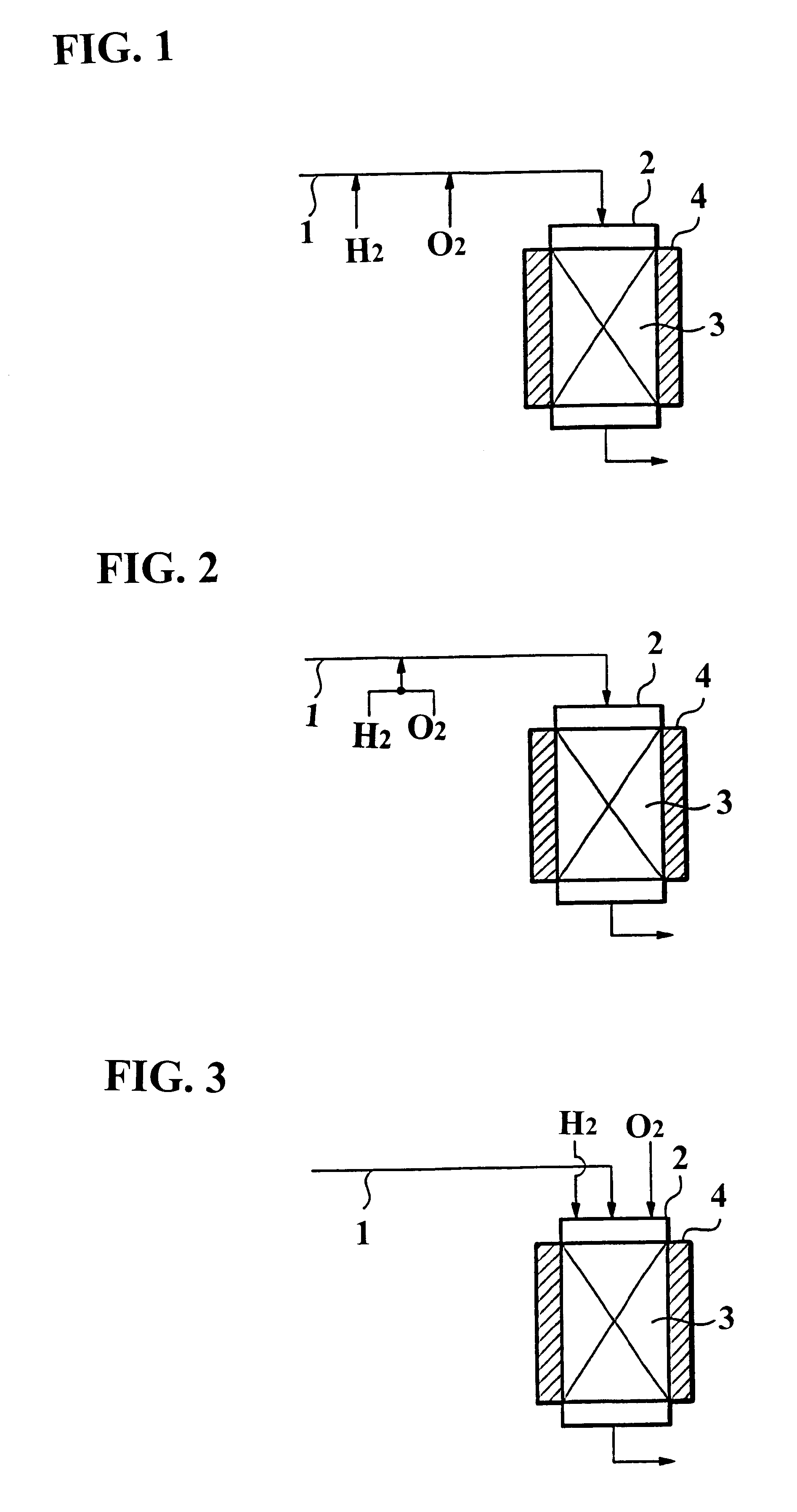Method for treating waste gas containing fluorochemical
a waste gas and fluorochemical technology, applied in the direction of physical/chemical process catalysts, separation of dispersed particles, separation processes, etc., can solve the problems of low decomposition rate, short life of the treating agent, and no method using it has been found effectiv
- Summary
- Abstract
- Description
- Claims
- Application Information
AI Technical Summary
Problems solved by technology
Method used
Image
Examples
examples
The present invention will now be described concretely by way of Examples, but the invention is not restricted thereby.
reference examples 1 to 4
A quartz column with a diameter of 25 mm was used, and packed with a treating agent to a layer height of 100 mm.
The packed column was mounted in a ceramic electric tubular furnace, and the treating agent layer was heated to 700.degree. C. A gas of C.sub.2 F.sub.6 alone diluted with an N.sub.2 gas was passed through the treating agent layer. The flow rate of the gas was 408 sccm, and the SV was set at 500 hr.sup.-1. The inlet gas concentration of C.sub.2 F.sub.6 was adjusted to 1%.
To investigate the treating performance, the outlet gas was analyzed, where necessary. When the removal rate of C.sub.2 F.sub.6 lowered to 90% or less, passage of the gas was stopped, and the amount of C.sub.2 F.sub.6 treated was determined based on the amount of the gas passed by then. The analysis of C.sub.2 F.sub.6 was made using a gas chromatograph equipped with a TCD detector.
The treating agents used were all commercially available products of Mizusawa Kagaku. The treating agents were .gamma.-alumina (...
example 8
Test for treatment of CF.sub.4 was conducted using Neobead GB-08 (a product of Mizusawa Kagaku, principal component: .gamma.-alumina) as .gamma.-alumina.
The same testing equipment as in Example 1 was used, and CF.sub.4, H.sub.2 and O.sub.2 gases were passed under the conditions described below. The outlet gas was analyzed where necessary, to investigate the treating performance of CF.sub.4. The experimental conditions are shown below.
A nitrogen gas containing CF.sub.4, H.sub.2 and O.sub.2 of the concentrations shown below was continuously passed for 1 to 2 hours. Then, a nitrogen gas containing H.sub.2 and O.sub.2 of the concentrations shown below was introduced for about 1 hour to discharge F remaining in the treating agent as HF. Then, a nitrogen gas containing CF.sub.4, H.sub.2 and O.sub.2 of the concentrations shown below was continuously passed again for 1 to 2 hours. This cycle was repeated.
1 Inflow concentrations:
The amount of H.sub.2 introduced was equivalent (2%) to the amo...
PUM
| Property | Measurement | Unit |
|---|---|---|
| temperature | aaaaa | aaaaa |
| particle size | aaaaa | aaaaa |
| specific surface area | aaaaa | aaaaa |
Abstract
Description
Claims
Application Information
 Login to View More
Login to View More - R&D
- Intellectual Property
- Life Sciences
- Materials
- Tech Scout
- Unparalleled Data Quality
- Higher Quality Content
- 60% Fewer Hallucinations
Browse by: Latest US Patents, China's latest patents, Technical Efficacy Thesaurus, Application Domain, Technology Topic, Popular Technical Reports.
© 2025 PatSnap. All rights reserved.Legal|Privacy policy|Modern Slavery Act Transparency Statement|Sitemap|About US| Contact US: help@patsnap.com



